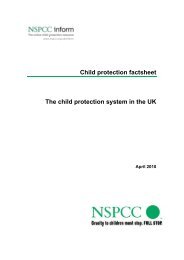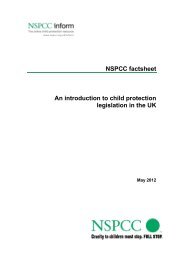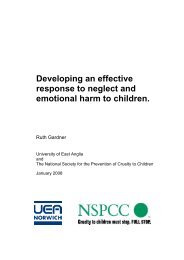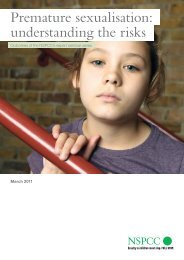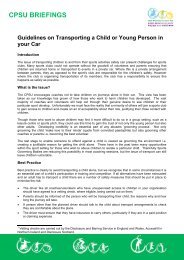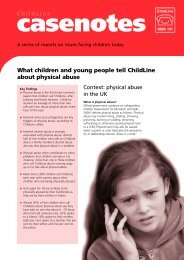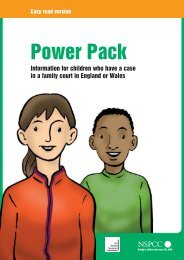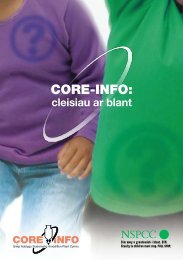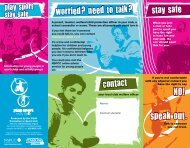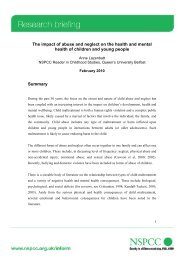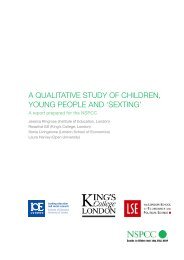Neglect and serious case reviews (PDF, 735KB) - nspcc
Neglect and serious case reviews (PDF, 735KB) - nspcc
Neglect and serious case reviews (PDF, 735KB) - nspcc
You also want an ePaper? Increase the reach of your titles
YUMPU automatically turns print PDFs into web optimized ePapers that Google loves.
Sudden unexpected deaths in infancy<br />
For this research defined as ‘unexplained infant deaths, within a context of neglectful<br />
care <strong>and</strong> a hazardous home environment’.<br />
Learning points:<br />
• The particular vulnerability of young babies in highly dangerous living conditions<br />
can be missed by practitioners <strong>and</strong> clinicians who should be on high alert in these<br />
circumstances. This can be especially relevant when working with large families<br />
where the needs of individual children can be lost.<br />
• Professionals can be falsely reassured about a baby’s safety even when the infant is<br />
the subject of a CP plan for neglect. A good relationship between a baby <strong>and</strong> parent<br />
cannot keep the infant safe for example when co-sleeping with a parent who has<br />
consumed drugs or alcohol.<br />
• Intervention to prevent SUDI where there are known risk factors (smoking, substance<br />
misuse <strong>and</strong> co-sleeping) is not always followed through with families.<br />
<strong>Neglect</strong> in combination with physical abuse<br />
Where assumptions about neglect masked the physical danger to the life of the child.<br />
Learning points:<br />
Suicide among young people<br />
• In these <strong>case</strong>s there tended to be a gradual dilution <strong>and</strong> forgetting of concerns about<br />
the risk of physical harm which would be overtaken by a ‘this is only neglect’ mindset.<br />
• The neglect label meant that the real risks from physical assault as well as from<br />
neglect were not taken <strong>serious</strong>ly.<br />
• The danger here is that in categorising children as experiencing neglect, less attention<br />
is paid both to the neglect itself <strong>and</strong> to the other risks they face. In particular, neglect<br />
does not preclude physical abuse.<br />
A long-term history of neglect having a catastrophic effect on a child’s mental wellbeing.<br />
Learning points:<br />
Executive Summary<br />
• Young people with long experiences of chronic neglect <strong>and</strong> rejection find it very<br />
difficult to trust <strong>and</strong> may present as hard to help.<br />
• The root causes of young people’s behaviour needs to be understood so that the<br />
responses of carers <strong>and</strong> professionals do not confirm young people’s sense of themselves<br />
as unworthy <strong>and</strong> unlovable.<br />
13




